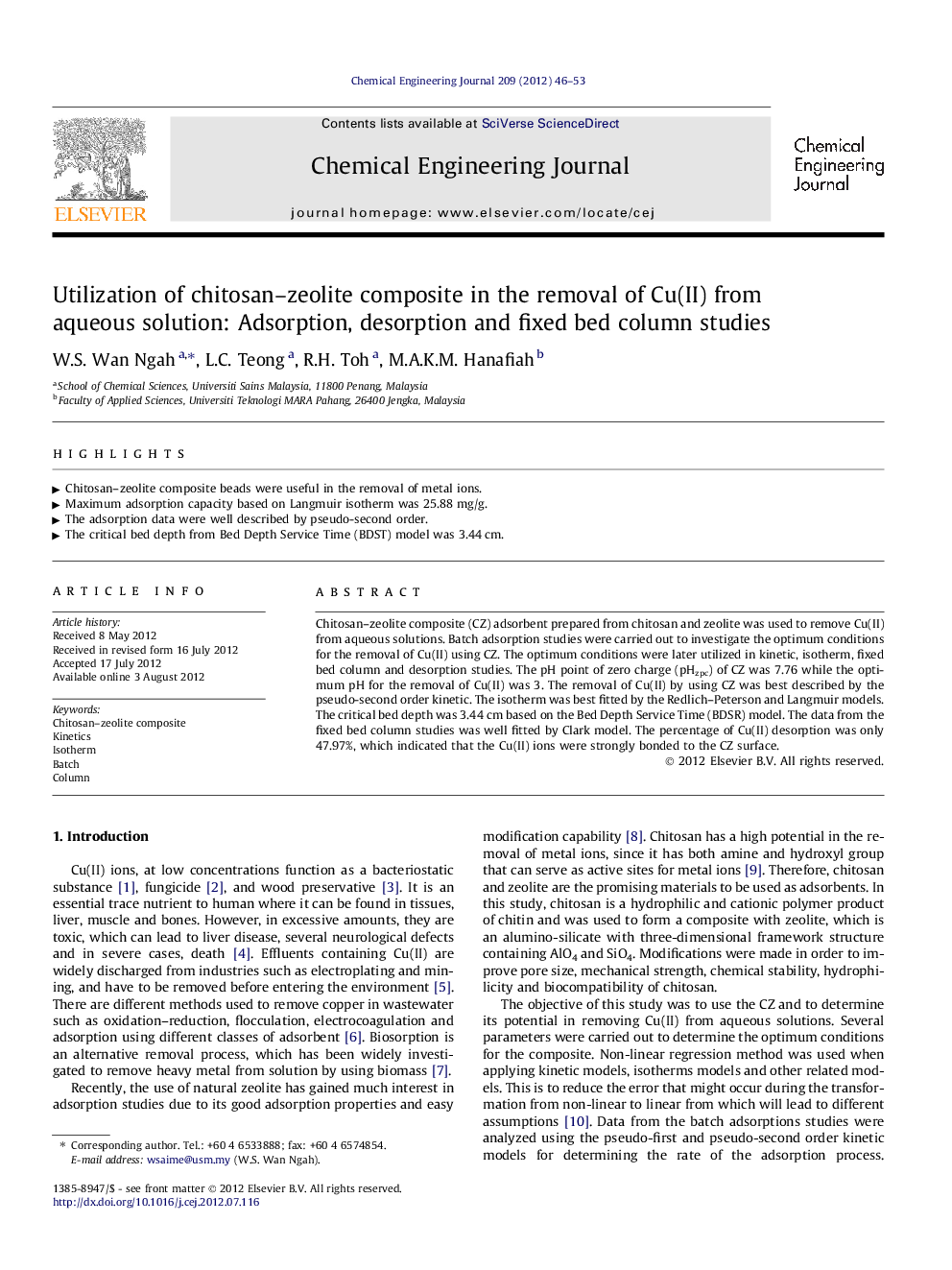| Article ID | Journal | Published Year | Pages | File Type |
|---|---|---|---|---|
| 149191 | Chemical Engineering Journal | 2012 | 8 Pages |
Chitosan–zeolite composite (CZ) adsorbent prepared from chitosan and zeolite was used to remove Cu(II) from aqueous solutions. Batch adsorption studies were carried out to investigate the optimum conditions for the removal of Cu(II) using CZ. The optimum conditions were later utilized in kinetic, isotherm, fixed bed column and desorption studies. The pH point of zero charge (pHzpc) of CZ was 7.76 while the optimum pH for the removal of Cu(II) was 3. The removal of Cu(II) by using CZ was best described by the pseudo-second order kinetic. The isotherm was best fitted by the Redlich–Peterson and Langmuir models. The critical bed depth was 3.44 cm based on the Bed Depth Service Time (BDSR) model. The data from the fixed bed column studies was well fitted by Clark model. The percentage of Cu(II) desorption was only 47.97%, which indicated that the Cu(II) ions were strongly bonded to the CZ surface.
► Chitosan–zeolite composite beads were useful in the removal of metal ions. ► Maximum adsorption capacity based on Langmuir isotherm was 25.88 mg/g. ► The adsorption data were well described by pseudo-second order. ► The critical bed depth from Bed Depth Service Time (BDST) model was 3.44 cm.
